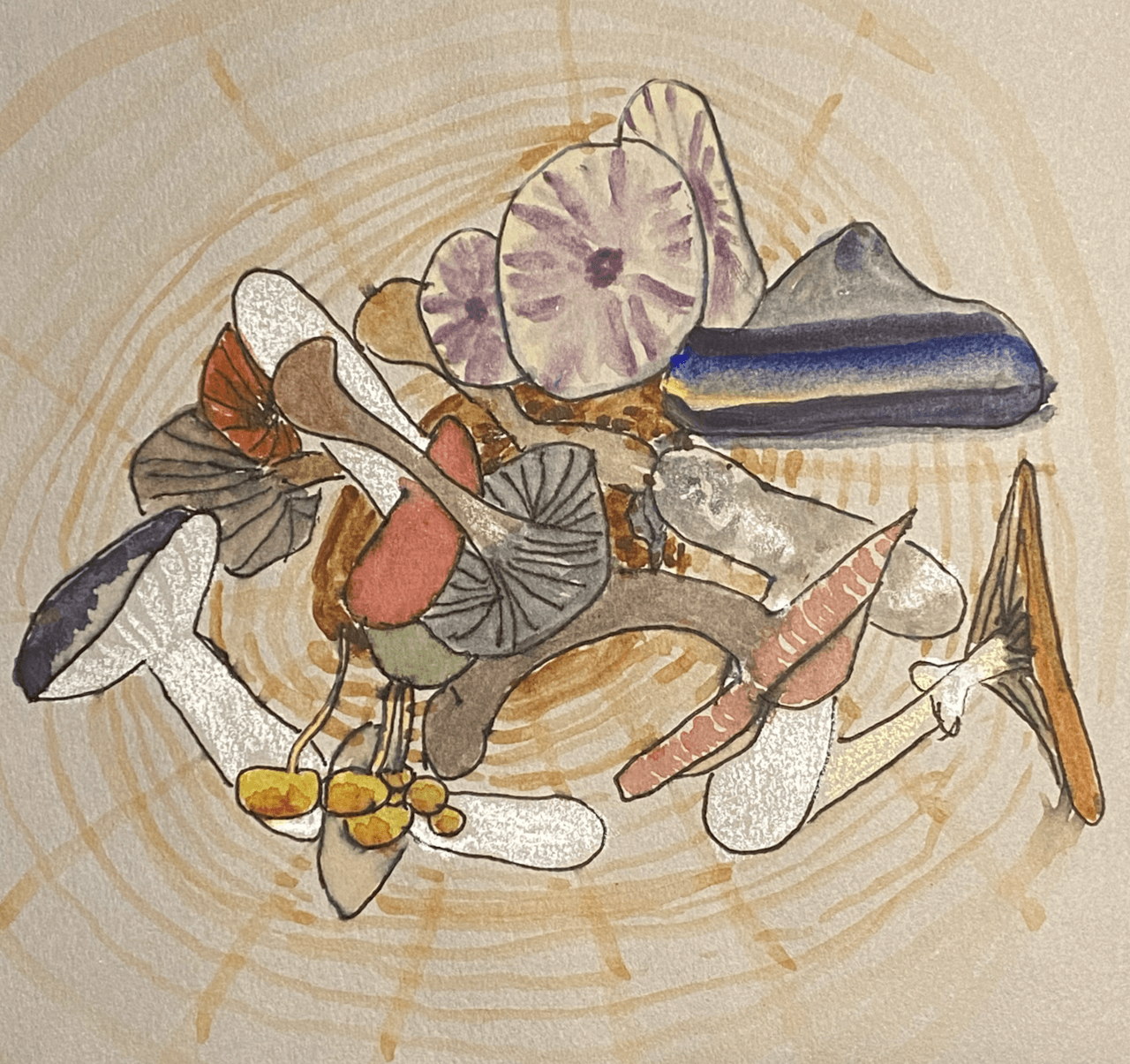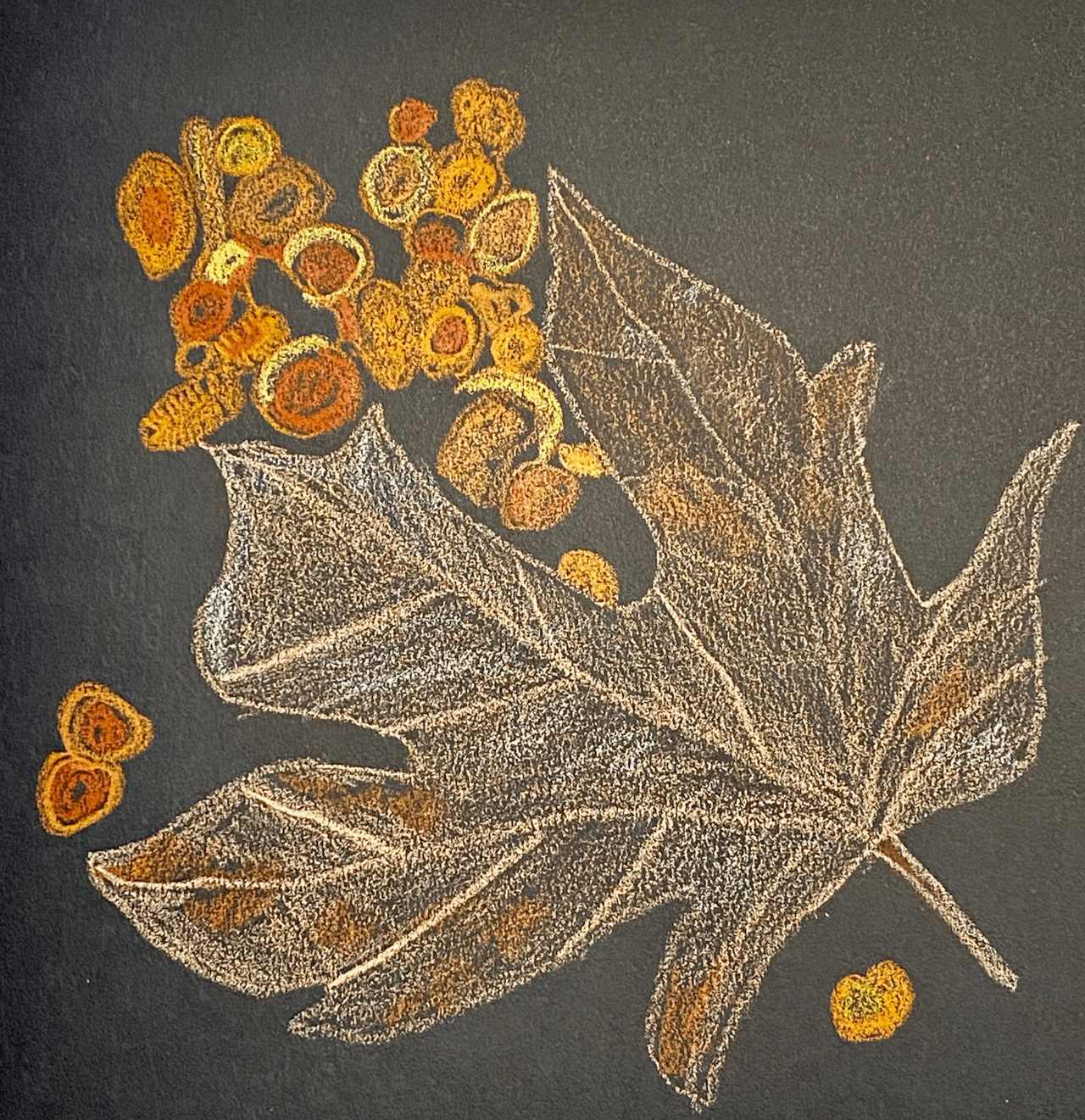Drawing during COVID times maintains mental health
March 28th, 2020 COVID day 15. Mushrooms in a basket. Mixed media: watercolor, Pilot G-2 pen, Caran D’ache Neocolor II pastels.
On the 14th of March I began serious social distancing due to COVID-19 and on the 23rd the State of Oregon locked down. I had been wanting to start a practice of doing a sketch or painting every day, and thought well, why not now? In preparation for a sketching workshop in May I had just bought a Stillman & Birn Nova three-color sketch book and some Neocolor II pastels to go along with my Pilot G-2 pen and watercolors. I thought a month would be a nice amount of time to build my skills before the workshop. Well, the workshop was cancelled and the lockdown went on for much longer than anticipated and we are still being careful. I managed to draw every day for 156 days and that practice was my silver lining from the COVID times.
When I sketch, all time ceases and I enter a zen-like state. The sense of well-being and gratefulness lasts long after sketches are finished. I recommend this practice to everyone for mental health, and the second benefit is that you do become more skilled.
2May20 COVID 50. Celebrating my 50th day in a row of sketching (!!!) with one of the major loves of my life: the fungi. This is Scutellinia scutellata, which has some of my favorite common names: The Molly eye-winker and the eyelash pixie cup. This little fungus (up to about 1 cm) is common on rotting logs throughout N America and Europe. In the PNW it is often embraced by mosses. Mixed media: watercolor, Pilot G-2 pen, Caran D’ache Neocolor II pastels.
3May2020 COVID 51. Sarcoscypha coccinea, the scarlet elf cup, is another one of my favorite ascomycetes. It grows on dead twigs, often buried so you need to know to excavate to discover its substrate. In the Eugene area it is strongly associated with vine maple. It fruits in the winter to spring in the Pacific Northwest, eastern USA and from Europe into Russia. Caran D’ache Neocolor II pastels, to which you can add water for a watercolor-like effect.
12May20 COVID 60. Ascocoryne sarcoides, “purple jelly drops”, are not usually quite this purple, but I was having fun. This gorgeous little fungus on rotting wood again has a Northern temperate distribution: Pacific Northwest, Eastern USA and Europe into Russia. It mostly skips dry places like the Rockies and Southwestern USA. Mixed media: Pilot G-2 pen, Caran D’ache Neocolor II pastels.
13May20 COVID 61. Sarcosphaera sp. This is the North American version of Sarcosphaera coronaria, the violet-crown cup or violet star-cup. The first one of these I found was on the surface, like the ones I drew here, but they are more often partially buried with the little crown sticking up through the soil and conifer needles. You’ve probably begun to notice a theme here, that my favorite Oregon “mushrooms” are not very typical looking, because they are ascomycetes not basidiomycetes. Mixed media: Pilot G-2 pen, Caran D’ache Neocolor II pastels.
14May20, COVID 62. Xylaria hypoxylon, the “candlesnuff” or “carbon antlers” fungus, looking down at the antler-like anamorph. Xylaria often look quite different depending on stage. Xylaria hypoxylon starts off with whitish “asexual” spores above with a black stipe below, but as it ages the white spore stage goes away, and the whole fungus becomes black with embedded perithecia that produce sexual ascospores. This species occurs on rotting hardwoods primarily in the North temperate forests of the USA and Europe. Caran D’ache Neocolor II pastels.
16May20 COVID 64. Aleuria aurantia, the orange peel fungus with an Acer macrophyllum (big-leaf maple) leaf. This commonly seen fungus grows on disturbed ground and in woodchips throughout the N temperate zone of the USA and Europe. Caran D’ache Neocolor II pastels.
Dedication: to Drs. Michael Beug and George Carroll who taught me to love the ascomycetes.







